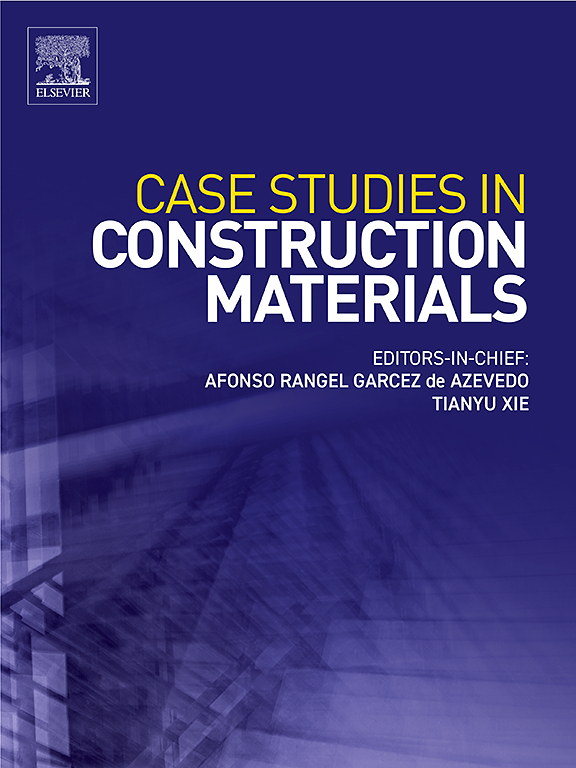Laboratory study on the asphalt mixture performance by nano-CaCO3 and basalt fiber
IF 6.6
2区 工程技术
Q1 CONSTRUCTION & BUILDING TECHNOLOGY
引用次数: 0
Abstract
Due to rapid changes in weather conditions and increased traffic loads, asphalt pavements have become more susceptible to distress such as rutting, fatigue cracks, and potholes. Therefore, significant attention has been focused on improving the performance of these pavements through various modifications. The objectives of this study are to enhance the overall performance of the asphalt mixture and improve its ability to resist traffic loads at both low and high temperatures simultaneously by using double additives from basalt fiber and nano-CaCO3. The study applied Marshall Stability, Wheel Track Test (WTT), Indirect Tensile Strength (ITS), and Marshall Immersion (MI) tests to assess the performance of the modified mixes. Additionally, the physical properties were examined using Scanning Electron Microscopy (SEM) and Energy Dispersive X-ray (EDX) analysis. Four asphalt mixtures were tested: the first was a control asphalt mix (CAM) to determine the optimum bitumen content (OBC); the second was nano-CaCO3 modified asphalt mix (NCAM) with 2 %, 4 %, 6 %, and 8 % of the bitumen weight; the third was basalt fiber modified asphalt mix (BFAM) with 0.25 %, 0.5 %, 0.75 %, and 1 % of the asphalt mix weight; and the fourth mixture contained 5.5 % bitumen and optimum ratios of nano-CaCO3 and basalt fibers (NCBFAM). The results showed that the addition of 8 % nano-CaCO3 led to significant improvements of 53.97 % in rutting resistance, 22.7 % in low temperature, and 12.5 % in durability (RMS) compared to the control mix (CAM). The addition of 0.5 % basalt fibers improved rutting resistance by 32.54 %, ITS by 7.62 %, and durability by 6.3 %. However, the combination of 8 % nano-CaCO3 and 0.5 % basalt fibers (NCBFAM) resulted in the most substantial improvements, with increases of 46.83 % in rutting resistance, 18.94 % in low temperature, and 10.26 % in durability compared to the conventional mix. These findings demonstrate that the combined addition of nano-CaCO3 and basalt fibers significantly enhances the Marshall properties, high and low temperature, and durability of the asphalt mix.
纳米碳酸钙与玄武岩纤维混合沥青混合料性能的室内研究
由于天气条件的快速变化和交通负荷的增加,沥青路面变得更容易受到车辙、疲劳裂缝和坑洞等问题的影响。因此,人们非常关注通过各种改造来改善这些路面的性能。本研究的目的是通过使用玄武岩纤维和纳米碳酸钙的双重添加剂来提高沥青混合料的综合性能,提高其同时抵抗低温和高温交通载荷的能力。该研究采用马歇尔稳定性、车轮轨迹试验(WTT)、间接拉伸强度(ITS)和马歇尔浸泡试验(MI)来评估改性混合料的性能。此外,使用扫描电子显微镜(SEM)和能量色散x射线(EDX)分析检查了物理性质。测试了四种沥青混合料:第一种是对照沥青混合料(CAM),以确定最佳沥青含量(OBC);二是纳米caco3改性沥青混合料(NCAM),分别占沥青质量的2 %、4 %、6 %和8 %;三是玄武岩纤维改性沥青混合料(BFAM),分别占沥青混合料重量的0.25 %、0.5 %、0.75 %和1 %;第四种混合料的沥青含量为5.5% %,纳米碳酸钙和玄武岩纤维的最佳配比(NCBFAM)。结果表明,添加8 %纳米caco3后,与对照相比,抗车辙性能显著提高53.97 %,低温性能显著提高22.7 %,耐久性显著提高12.5 %。添加0.5 %玄武岩纤维后,抗车辙性提高32.54 %,ITS提高7.62 %,耐久性提高6.3 %。然而,8 %纳米caco3和0.5 %玄武岩纤维(NCBFAM)的组合效果最为显著,与常规混合材料相比,抗车辙性能提高46.83 %,低温性能提高18.94 %,耐久性提高10.26 %。研究结果表明,纳米caco3和玄武岩纤维的掺入显著提高了沥青混合料的马歇尔性能、高低温性能和耐久性。
本文章由计算机程序翻译,如有差异,请以英文原文为准。
求助全文
约1分钟内获得全文
求助全文
来源期刊

Case Studies in Construction Materials
Multiple-
CiteScore
7.60
自引率
19.40%
发文量
842
审稿时长
63 days
期刊介绍:
Case Studies in Construction Materials provides a forum for the rapid publication of short, structured Case Studies on construction materials. In addition, the journal also publishes related Short Communications, Full length research article and Comprehensive review papers (by invitation).
The journal will provide an essential compendium of case studies for practicing engineers, designers, researchers and other practitioners who are interested in all aspects construction materials. The journal will publish new and novel case studies, but will also provide a forum for the publication of high quality descriptions of classic construction material problems and solutions.
 求助内容:
求助内容: 应助结果提醒方式:
应助结果提醒方式:


